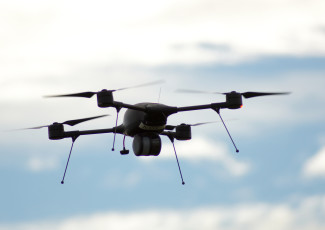Aviation Program Soars With Support
By Dennis Pierce
June 20, 2016
With help from industry and community partners, Lake Superior College has resurrected its aviation-maintenance program to feed a growing demand for technicians.
The Aviation Maintenance Technician program at Lake Superior College (LSC) in Duluth, Minnesota, just graduated its first cohort of 17 students, who will have no trouble putting their new skills to work.
In fact, most of the program’s graduates already work for AAR Corp., one of several aviation-related companies in the Duluth area. AAR, which services Air Canada passenger jets, has partnered with LSC to help market the program, and it offers $10,000 in tuition reimbursement to students who work for the company full time and meet certain eligibility criteria. The program’s total cost is $15,500.
The aviation-maintenance field is facing a “dire” shortage of workers within the next few years, says Jenni Swenson, dean of business and industry at LSC. That was the impetus behind the college’s decision to get back into aviation-maintenance training.
A program reborn through partnerships
Ten years ago, LSC began working with Northwest Airlines to develop an aviation-mechanics program and bought $300,000 worth of teaching equipment from Winona State University, including engines, tools and simulator boards. Before the Federal Aviation Administration (FAA) could approve the program, however, the airline had closed its Duluth operations.
Then, in late 2012, AAR opened a new aircraft-maintenance facility in Duluth and needed more employees. LSC still had the equipment it had purchased from Winona State, so with support from AAR and other local aviation companies, such as Cirrus Aircraft, the college quickly developed the Aviation Maintenance Technician program.
Federal and local partnerships helped as well. For instance, the FAA helped usher the college through the approval process, even allowing LSC to launch its program in a smaller-than-required space, with the promise that it would move to a larger building by year two.
“The FAA was extremely supportive,” Swenson says, describing the agency as “keenly aware” of the demand for more aviation employees to replace retiring workers.
And support from industry and the community has been crucial. “It’s not just two or three partners, but multiple partners across different sectors,” says LSC President Patrick Johns. “It’s a large group that touches this program and helped us get it completed.”
Industry partners help with marketing, offer tuition breaks and hire program participants before they’ve even graduated. In addition, AAR and Cirrus have donated equipment to supplement the tools that LSC bought from Winona State. For instance, Cirrus donated $50,000 worth of equipment, including airplane wings, alternators, compressors, composites and an engine. These donations “allow students to be using the most up-to-date equipment,” Swenson says.
Putting the program in place
LSC started its aviation-maintenance program in a space less than 10,000 square feet that once housed a machine-tool program. To find a larger space for the program in its second year, the college worked with city officials, eventually leasing space in a hangar at Duluth International Airport. The city helped renovate the 38,000-square-foot space, which has become LSC’s Center for Advanced Aviation.
Half of the hangar houses the aviation-maintenance program, and the other half is used for the college’s Professional Pilot program. Having the pilot and mechanic programs in the same building provides a synergy that helps both sets of students.
“I know the pilots benefit from that for sure,” Swenson says, “because when they’re in class and they’re talking about reacting to the failure of certain systems, they can actually go over to the planes that we’re working on. [They can] look at some of the trainers and get a better idea of what that means visually, instead of just hearing about it.”






